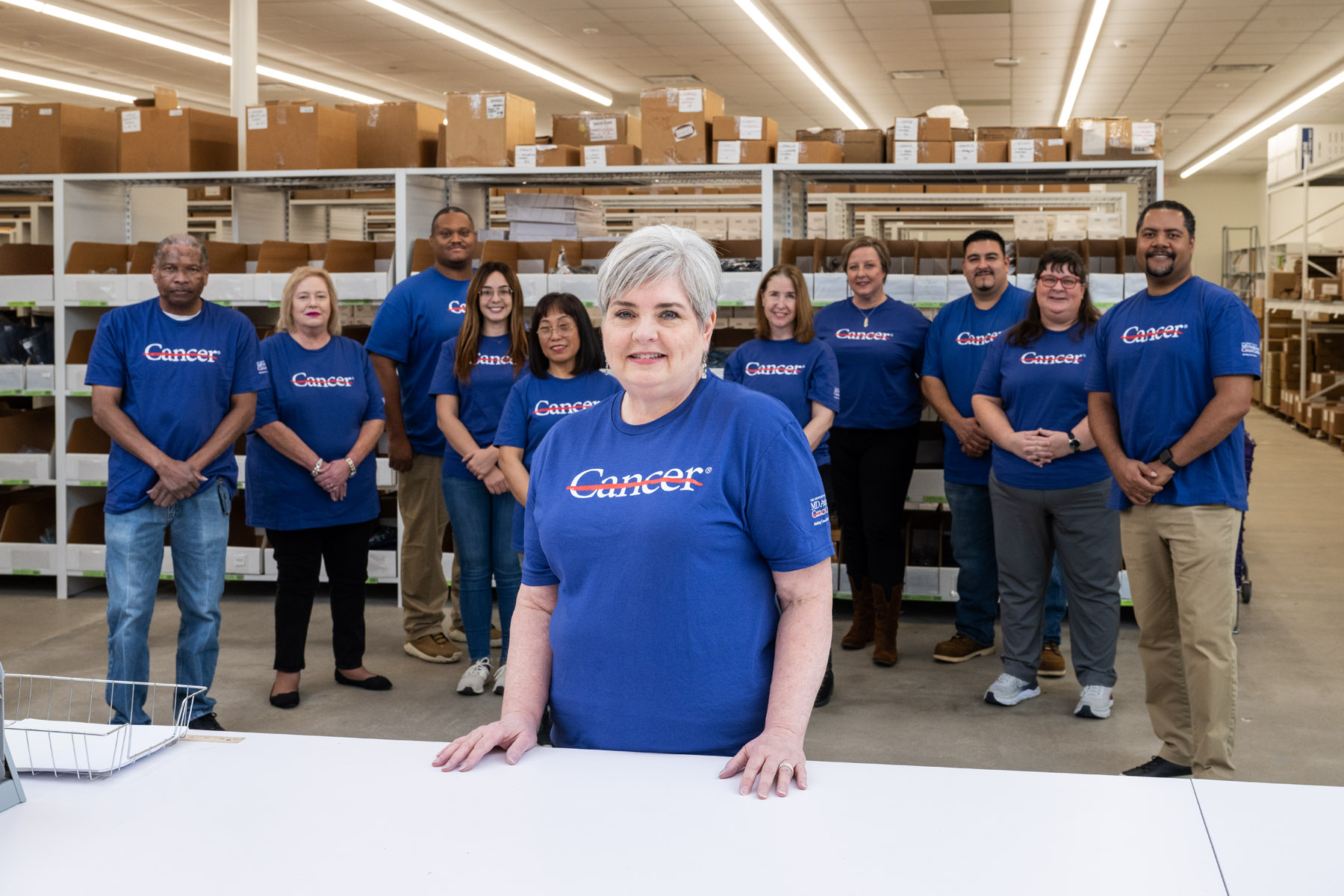- Diseases
- Acoustic Neuroma (14)
- Adrenal Gland Tumor (24)
- Anal Cancer (66)
- Anemia (2)
- Appendix Cancer (16)
- Bile Duct Cancer (28)
- Bladder Cancer (68)
- Brain Metastases (28)
- Brain Tumor (228)
- Breast Cancer (716)
- Breast Implant-Associated Anaplastic Large Cell Lymphoma (2)
- Cancer of Unknown Primary (4)
- Carcinoid Tumor (8)
- Cervical Cancer (154)
- Colon Cancer (164)
- Colorectal Cancer (110)
- Endocrine Tumor (4)
- Esophageal Cancer (42)
- Eye Cancer (36)
- Fallopian Tube Cancer (6)
- Germ Cell Tumor (4)
- Gestational Trophoblastic Disease (2)
- Head and Neck Cancer (6)
- Kidney Cancer (124)
- Leukemia (344)
- Liver Cancer (50)
- Lung Cancer (288)
- Lymphoma (284)
- Mesothelioma (14)
- Metastasis (30)
- Multiple Myeloma (98)
- Myelodysplastic Syndrome (60)
- Myeloproliferative Neoplasm (4)
- Neuroendocrine Tumors (16)
- Oral Cancer (100)
- Ovarian Cancer (170)
- Pancreatic Cancer (166)
- Parathyroid Disease (2)
- Penile Cancer (14)
- Pituitary Tumor (6)
- Prostate Cancer (144)
- Rectal Cancer (58)
- Renal Medullary Carcinoma (6)
- Salivary Gland Cancer (14)
- Sarcoma (236)
- Skin Cancer (294)
- Skull Base Tumors (56)
- Spinal Tumor (12)
- Stomach Cancer (60)
- Testicular Cancer (28)
- Throat Cancer (90)
- Thymoma (6)
- Thyroid Cancer (98)
- Tonsil Cancer (30)
- Uterine Cancer (78)
- Vaginal Cancer (14)
- Vulvar Cancer (18)
- Cancer Topic
- Adolescent and Young Adult Cancer Issues (20)
- Advance Care Planning (10)
- Biostatistics (2)
- Blood Donation (18)
- Bone Health (8)
- COVID-19 (362)
- Cancer Recurrence (120)
- Childhood Cancer Issues (120)
- Clinical Trials (622)
- Complementary Integrative Medicine (24)
- Cytogenetics (2)
- DNA Methylation (4)
- Diagnosis (226)
- Epigenetics (6)
- Fertility (62)
- Follow-up Guidelines (2)
- Health Disparities (14)
- Hereditary Cancer Syndromes (122)
- Immunology (18)
- Li-Fraumeni Syndrome (8)
- Mental Health (118)
- Molecular Diagnostics (8)
- Pain Management (64)
- Palliative Care (8)
- Pathology (10)
- Physical Therapy (18)
- Pregnancy (18)
- Prevention (888)
- Research (388)
- Second Opinion (74)
- Sexuality (16)
- Side Effects (602)
- Sleep Disorders (10)
- Stem Cell Transplantation Cellular Therapy (216)
- Support (404)
- Survivorship (322)
- Symptoms (186)
- Treatment (1770)
MD Anderson advances novel therapeutic antibody into AML clinical trials
4 minute read | Published June 19, 2019
Medically Reviewed | Last reviewed by an MD Anderson Cancer Center medical professional on June 19, 2019
Leukemia researchers at The University of Texas MD Anderson Cancer Center, working collaboratively with the Therapeutics Discovery division, have advanced a first-in-class therapeutic antibody into a Phase I clinical trial for patients with high-risk acute myeloid leukemia (AML), myelodysplastic syndromes (MDS) and myeloproliferative neoplasms.
The antibody, known as h8F4, is a T-cell receptor (TCR)-like antibody that can kill leukemia cells by targeting PR1, a peptide found selectively on the surface of leukemia cells.
The antibody originally was generated by the laboratory of Jeffrey Molldrem, M.D., professor of Stem Cell Transplantation & Cellular Therapy and chair ad interim of Hematopoietic Biology & Malignancy. Clinical production, testing and development was advanced by the Oncology Research for Biologics and Immunotherapy Translation (ORBIT) platform with support from an agreement with Astellas Pharma Inc.
New therapeutic options are needed for AML, explains Molldrem, to improve upon the standard chemotherapy leukemia treatment now available and bring lasting cures to more patients. While induction chemotherapy results in remission for roughly 70 percent of patients overall, many will experience relapse and just 25 percent will be alive 3-5 years later.
“The problem really is that you can’t eliminate the founder cells that initiate the leukemia process. They’re a rare population, and they’re hard to eliminate with standard therapy,” says Molldrem. “So we need something that has better outcomes, can help get rid of leukemia stem cells and is less toxic.”
PR1 peptide targeted for leukemia treatment
The PR1 peptide is normally found inside hematopoietic cells, the product of two protease enzymes. However, as Molldrem discovered, PR1 is selectively presented on the surface of leukemia cells by an immune-related protein called HLA-A2.
Recognizing the value of this as a leukemia target, researchers in Molldrem’s lab worked to develop h8F4, which binds PR1 in complex with HLA-A2 on the cell surface to induce death of the leukemia cells. In preclinical studies, h8F4 appeared to be effective at eliminating leukemia cells, particularly leukemia-initiating cells, in mouse xenograft models of human AML.
Based on preclinical data, ORBIT took responsibility for all aspects of drug development to advance h8F4 to the clinic. ORBIT completed all activities related to clinical drug chemistry, manufacturing and control, performed the necessary steps for Investigational New Drug (IND)-enabling studies, and completed safety, pharmacology and toxicology translational studies. The ORBIT team also developed assays for pharmacokinetics and immunogenicity.
Through their successful preclinical development and manufacturing work, the IND application was submitted and approved by the Food and Drug Administration. A Phase I clinical trial led by Jorge Cortes, M.D., professor of Leukemia, has opened and the first patient was treated in April.
The ORBIT platform is an integrated group of drug development experts working to advance novel monoclonal antibodies that target cancer cells or stimulate an immune response. As part of MD Anderson’s Therapeutics Discovery division, this team works collaboratively with MD Anderson clinicians and researchers to avoid traditional barriers to antibody development and bring new therapeutics from concept to clinic, all under one roof.
The platform is part of MD Anderson’s Moon Shots Program™, a collaborative effort designed to accelerate the development of scientific discoveries into clinical advances that save patients’ lives.
“This is a great example of how a Moon Shots platform can work together with an MD Anderson clinician that has been working on this cancer biology for many years,” said Dongxing Zha, Ph.D., institute head, ORBIT platform. “We have a dedicated group that can complement our faculty’s skill sets and enable the development of these products. We are really proud of this kind of seamless collaboration to get this drug into the clinic.”
The development also would not have been possible without the support from Astellas. An option agreement signed in 2015 provided financial support for the clinical development and testing ORBIT completed before h8F4 could advance to the clinic. Sapna Parshottam, associate director of research planning & development in Molldrem’s group in Transplant Immunology, Stem Cell Transplantation and Cellular Therapy, was key in managing the alliance and facilitating each step of the regulatory and approval process for h8F4.
MD Anderson has implemented an Institutional Conflict of Interest Management and Monitoring Plan to protect patients and manage its financial conflict of interest regarding this research. You can read more here.
ORBIT and Molldrem’s lab now are collaborating to investigate alternative approaches to targeting PR1 in hematopoietic malignancies and other cancer types where it can be found. These include chimeric antigen receptor (CAR) approaches to target PR1 and overcome potential resistance to the h8F4 antibody.
Further, this approach broadens potential therapeutic targets by allowing researchers to go after proteins normally only found in the cell. Using the technology pioneered by Molldrem’s lab, the ORBIT platform now is working to expand their pipeline of therapeutic antibodies for targets abnormally presented on the surface of cancer cells, explains Zha.






